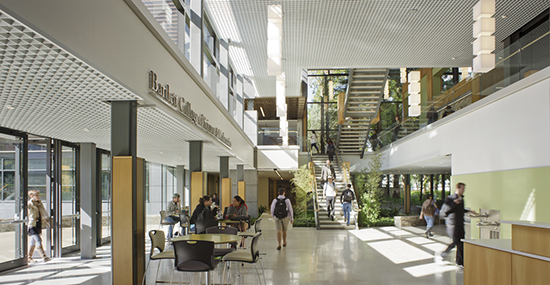
This is the first post in a series considering the role of psychological research within the context of an architectural practice. The goal of this series is to provide answers to six key questions, namely, the why, what, who, when, how and where, of design focused psychological research.
Over the past decade there has been a growing interest in the role of research within the architectural practice. To be clear, architects have always, as part of the design process, engaged in some form of research through the selection and integration of appropriate building materials and technologies.
One of the main drivers in this renewed interest is the emphasis on sustainable design and improved building performance. It has become an increasingly common expectation that architects should be able to support specific decisions influencing building performance by means of reliable and verifiable research. Performance claims made during the design phase to justify the use of specific systems, materials or technologies are increasingly coming under scrutiny. These trends, together with the proliferation on new building systems, materials and technologies, require that architects develop additional skills in order to, not only keep up with the latest developments, but also contribute to these developments through taking part in the larger discourse.
“Designed Informed” a 2010 publication supported by the AIA describes the forms contemporary research take in a number of different design firms.
Although little question exists regarding the value of research when it comes to energy use and building performance, the discussion regarding the “non-physical” performance of buildings is still in its infancy. In the past, a number of disciplines have attempted to address topics related to the social and/or psychological performance of buildings. The importance of the physical environment on human performance is well acknowledged in psychology, sociology and the various design disciplines. However this field of research has, apart from a brief period of development during the 1960’s, largely remained outside of the general architectural discourse and practice. This is particularly true within the North American context. Various reasons exist for this, not least of which is the fact that architects already need to manage a seemingly endless number of variables during the normal building design and construction process. The addition of another layer of complexity to an already complex process seems unreasonable. Even where architects recognize the potential value of design focused social and psychological research, uncertainty regarding how and where to start impedes the process.
With these challenges in mind, the aim of this series of posts is to provide a basic and accessible overview of design focused psychological and social research as it relates to the practice of architecture. Although the term ‘psychosocial’ has various connotations within the disciplines of psychological and social psychology, it will be understood, within the context of these posts, to refer to the psychological and social factors as related to the general designed environment, and specifically the building environment.
The goal of this series is to provide answers to six key questions, namely, the why, what, who, when, how and where, of design focused psychosocial research. The underlying assumption of this series is that this type of research will increase in importance over the next few years, and while not all designers will equally engage in it, a basic understanding of its potential and limitations is essential for all designers.


